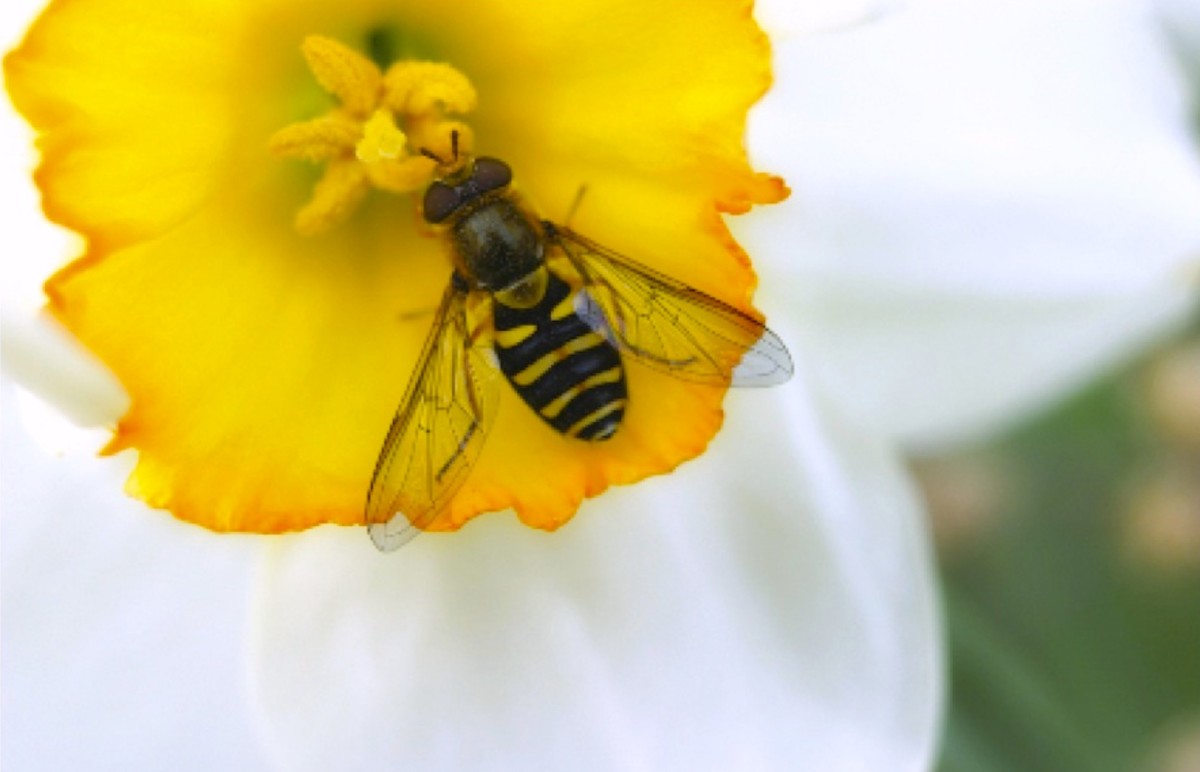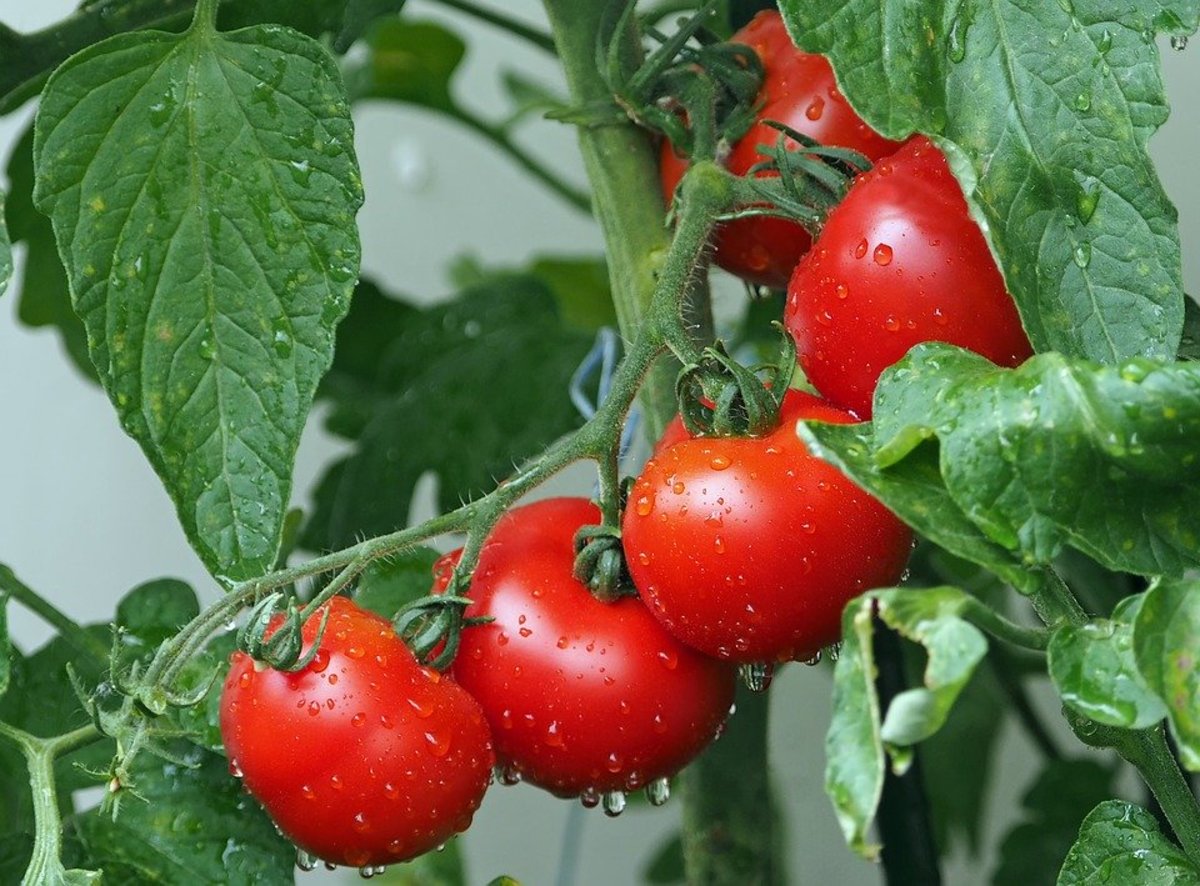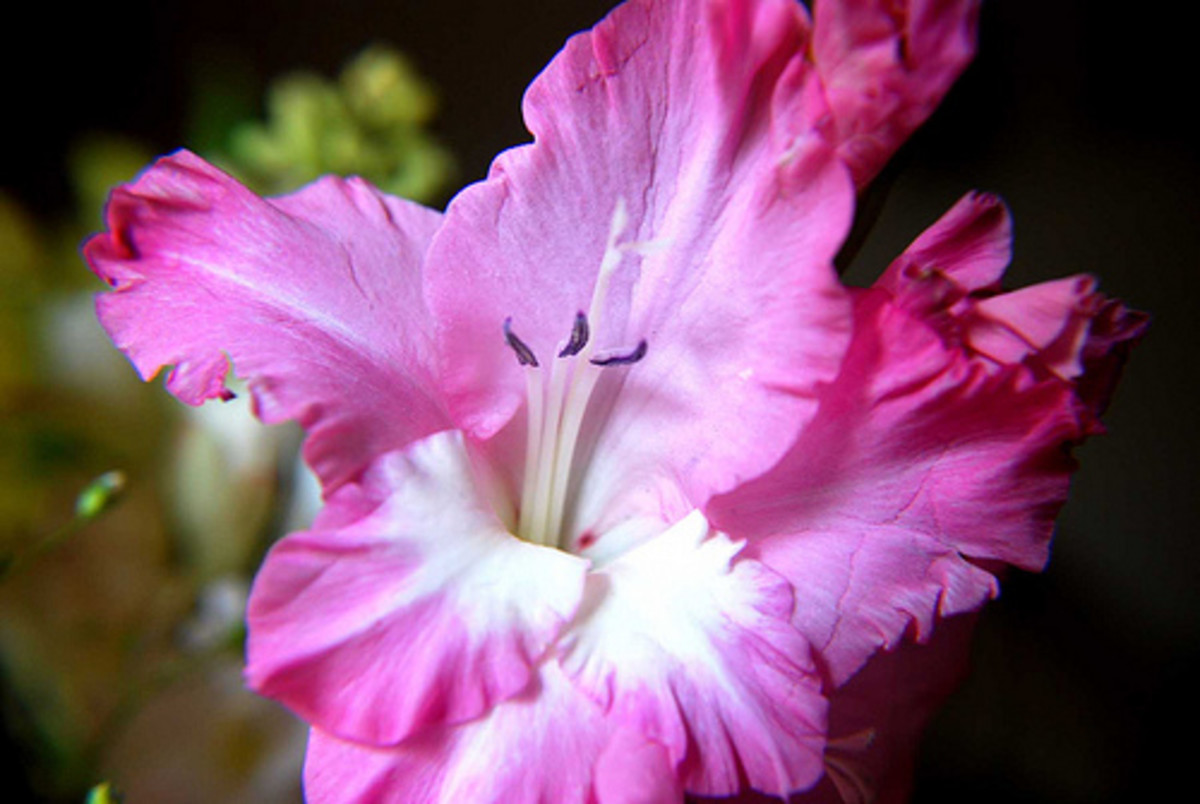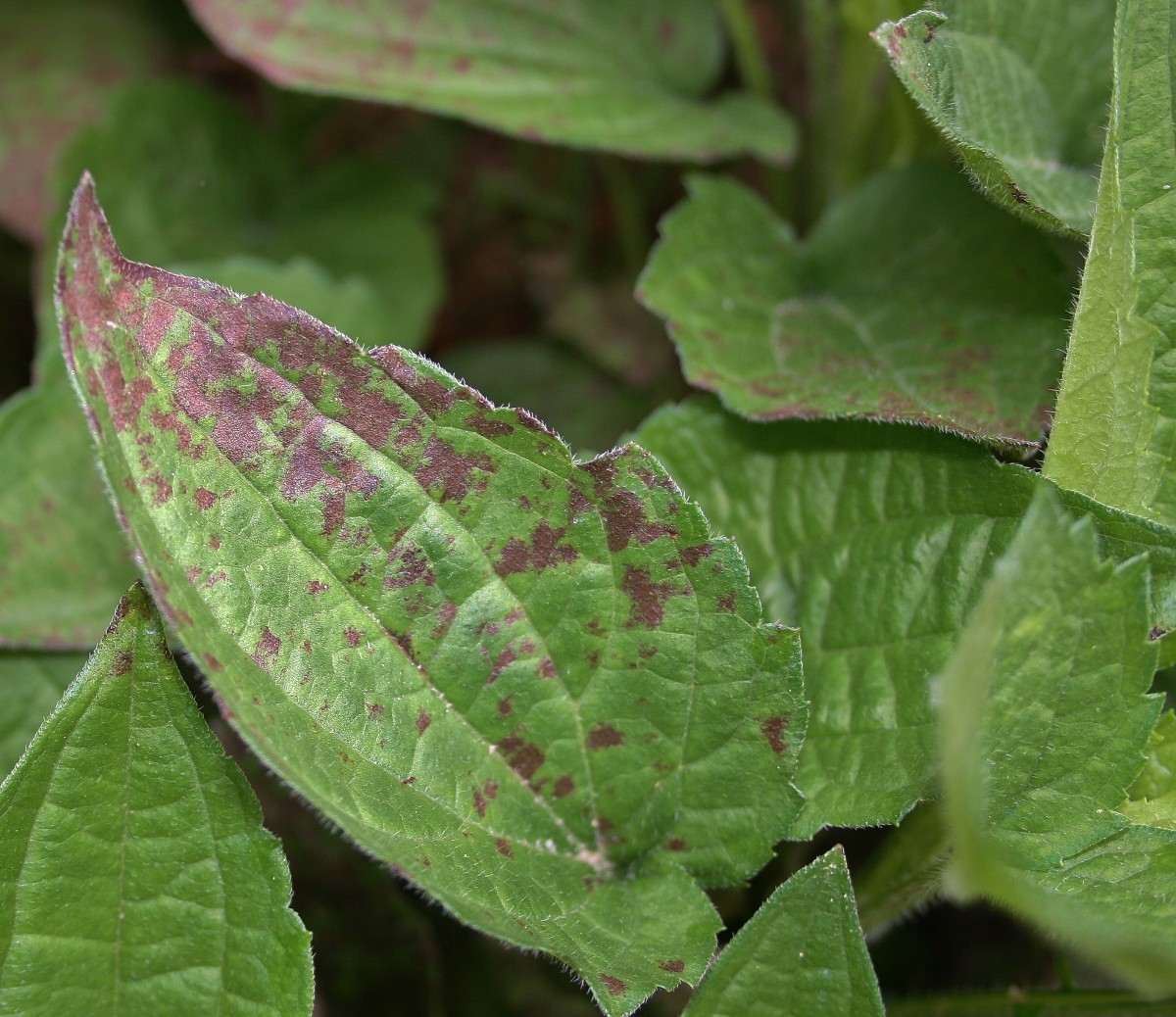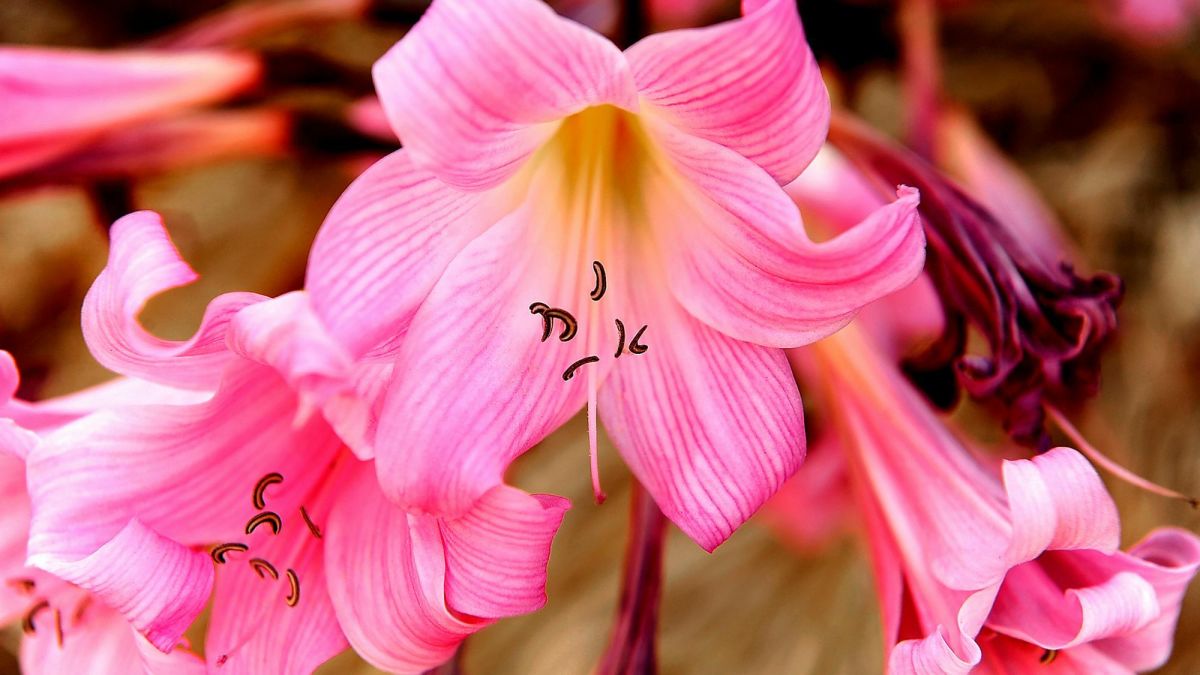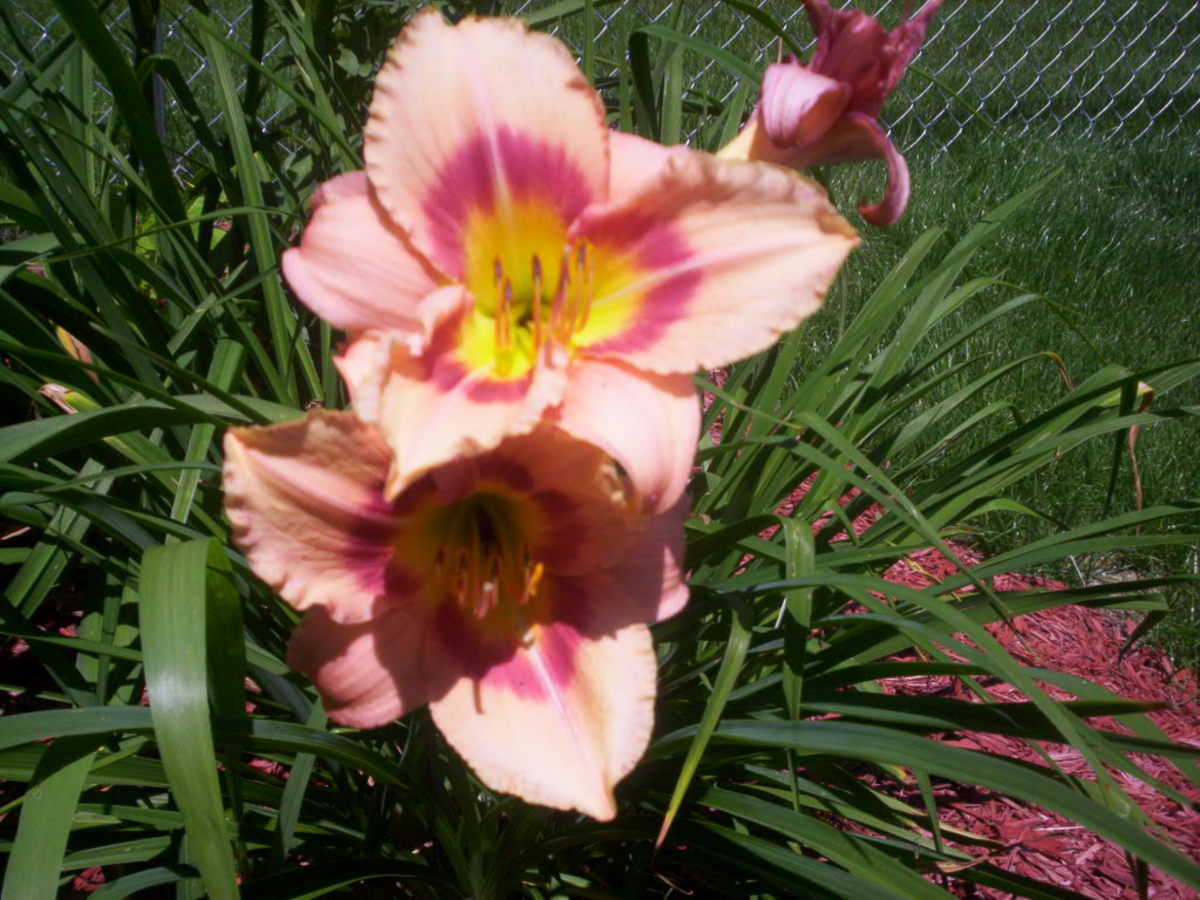Planting Daffodils - Guide to Daffodils Care
Learn How to Plant Daffodils
Daffodils are bulb flowers that bloom in the spring time and will come back year after year. You'll learn how to plant daffodils bulbs in your garden how to care for them so you can enjoy them every spring!
Daffodils are a very beautiful plant and there are tons of different types of daffodils, little daffodils and larger ones and they come in different colors, yellow and white are most common kinds and are commonly chosen. There are some daffodils that will be more fragrant than others, so you can choose the type of daffodil that you would like best for your garden. You're sure to find something you'll love!
Daffodils are a wonderful flower to have in your garden, especially if you are just starting out with gardening as they are a very easy flower to grow.
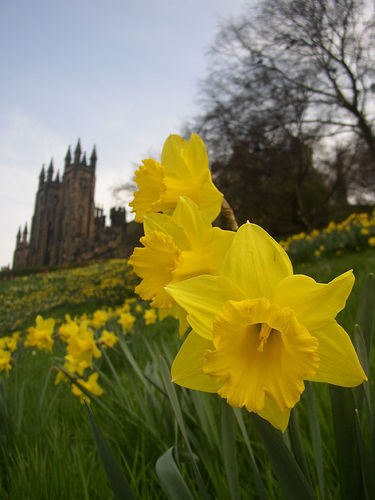
How to Plant Daffodil Bulbs
A lot of books will say that after the 15th of November you can no long plant Daffodils, however if you do not have an extremely harsh winter and the ground is not frozen when you plant, you can continue planting daffodils all through November and even into December and still have them pop up and bloom in the spring time.
Just ensure that the ground is not frozen when you plant them, that's more of a factor than the actual date. So really, you can plant your daffodils throughout the fall.
Daffodil bulbs like Tulip bulbs look like Hershey kisses, you plant them with the point up. However if you are not sure which side goes up you can always plant them sideways as they will work their way up out of the soil. If you have a large bulb with mini bulbs attached it is best to just leave the smaller bulbs attached and plant them that way as they will ultimately grow better kept together.
Daffodil flowers are "social" and will grow better if planted together with more daffodils than if they are planted each one separately. You will want to plant at least 3 of the daffodil bulbs in a triangle shape together, you can plant more if desired.
Plant your daffodils mixed in with your lilies, calla lilies, and other bulb flowers that will bloom in the summer through the fall so you will have beautiful colorful flowers in that area from the spring throughout autumn.
How deep you plant will actually be fairy dependent on the size of the daffodil bulb. You always want to plant so you have at least 3 inches of dirt over them. You may need to plant deeper if you have fairly large daffodil bulbs but a good rule of thumb is to plant them so you have 3 inches of soil above your bulbs.
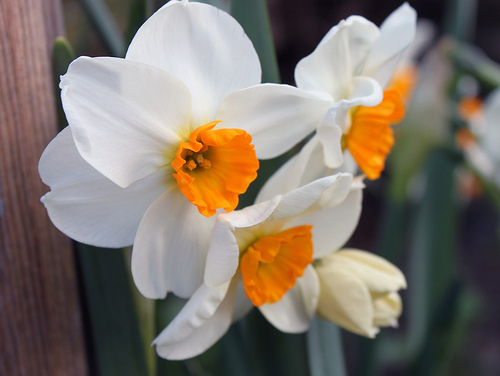
Where to Plant Daffodils
Daffodils are a flower that loves sun! They should be planted in full sun areas. However if you have a place that is next to deciduous trees, since they shed their leaves over the winter and will only be budding in the spring a place that is normally shady in the summer but is really sunny in the spring will be perfect for planting daffodils.
You can even plant your daffodils in your lawn. They will pop up and bloom in the spring when you are not mowing your lawn and then in the summer you can just mow them down with the grass after they are finished blooming and they will continue to pop back up year after year in the spring and look really great!
If you plant your daffodils in the ground you can leave them there all year round. However if you have planted your daffodils in pots you will want to make sure you keep them dry in the winter, cover up the pots of put them in the garage in the winter months to keep them dry and from freezing over. If your container gets wet with your daffodils in the winter and they freezes you will often lose the flowers.
Overall daffodils are an very easy flower to grow and will continue to flower year after year and will keep your garden looking amazing!
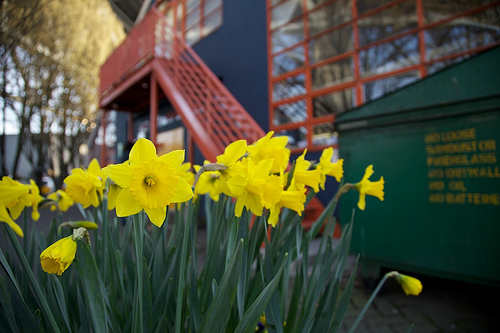
Soil To Plant Daffodils
Daffodils grows best in slightly acidic soil with a low pH, less than 7.0. You can purchase a soil testing kit at most garden centers. To add some acidity to the soil you can mix in a little bit of garden sulfur.
When planting your daffodil bulbs if your soil is already fairly wet you might consider adding in sand to help dry the soil a bit since bulbs are more likely to just rot if left in soil that is always wet. An alternative to that is to build a raised garden bed for your flowers. You need to make sure that the place you plant your daffodils has good soil drainage.
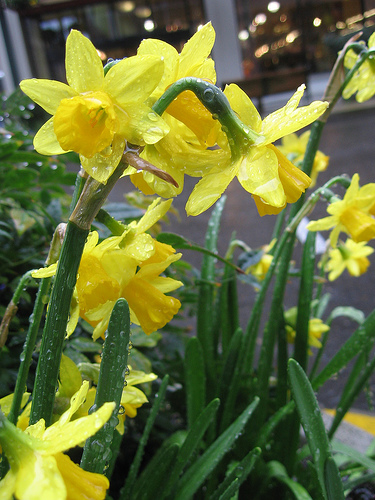
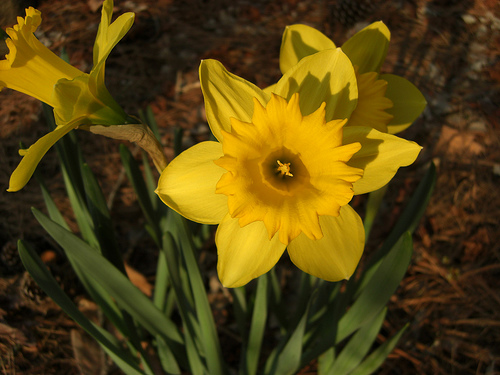
When to Fertilize Daffodils & What to Use
There is a bit of confusion when it comes to when to fertilize daffodils. Some places you will hear in the spring and other places you will hear to do so in the fall! Let's clear this up, you can fertilize in both the spring AND the fall.
If you are going to choose one time to fertilize daffodils I suggest you do so in the fall since most of your under ground growth is done during the fall and sometimes into the winter. Of course, once the weather warms up slightly in the spring, the growth will continue. Once the ground temperature falls under 40 degrees you will want to wait until spring to fertilize.
Also, the fertilizer will help promote beautiful, healthy blooms if used in the spring time as well as the root growth continuing which is why you can fertilize in the spring as well.
All types of fertilizers are labeled with three numbers that tell you the percentage of those nutrients. They are always listed in the same order: nitrogen-phosphorous-potash. You would use different fertilizer based on which season you are fertilizing. The optimal fertilizer for daffodils is low in nitrogen and higher in phosphorous as well as potash. You also will want to choose an organic fertilizer.
Fertilizing Daffodils in the Fall
If you are doing so in the fall you are going to want a slow releasing fertilizer so it can slowly release nutrition to your flowers over months. In Autumn use a fertilizer with a higher potassium ratio, such as a 5-10-12 or 10-10-20, doing so will help encourage good root growth.
Fertilizing Daffodils in the Spring
If you are fertilizing in the spring you want a quick, water soluble fertilizer that will release a bunch of nutrition to your flowers right away. You will want to place that over the soil and water the plant thoroughly. A great nitrogen-phosphorous-potassium ratio to use in spring time is 5-10-10.
Make sure that you fertilizers never touch the flowers, leaves or roots of the plant as they can actually burn them.

